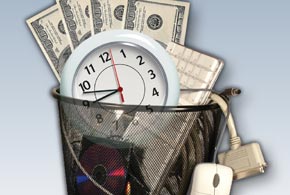
How Outdated Tech Wastes Billions of Dollars
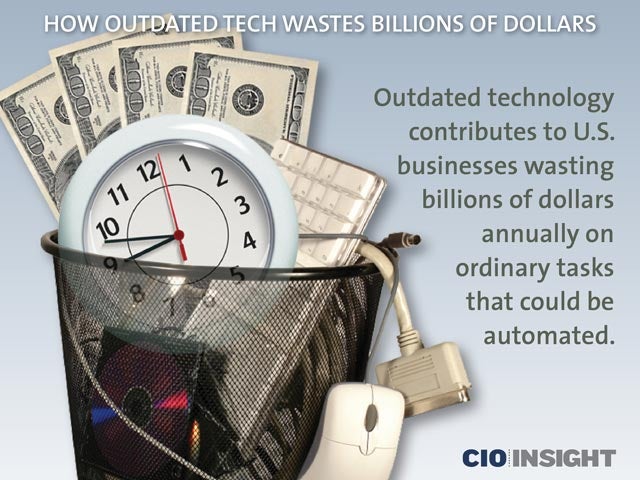 How Outdated Tech Wastes Billions of Dollars
How Outdated Tech Wastes Billions of Dollars
Outdated technology contributes to U.S. businesses wasting billions of dollars annually on ordinary tasks that could be automated.
 Why U.S. Businesses Waste $1.8 Trillion Annually
Why U.S. Businesses Waste $1.8 Trillion Annually
Workers spend on average 520 hours a year (over one day of work each week) on mundane tasks that could easily be automated. Based on the average national hourly wage of $25.39, this translates to businesses losing $13,202.88 a year per employee on unproductive tasks.
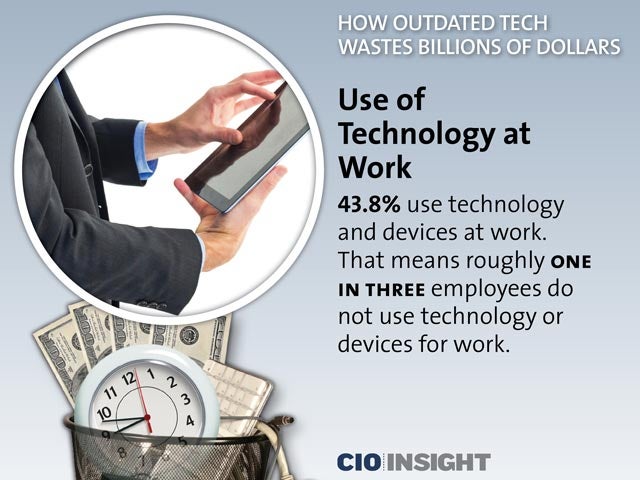 Use of Technology at Work
Use of Technology at Work
43.8% use technology and devices at work. That means roughly one in three employees do not use technology or devices for work.
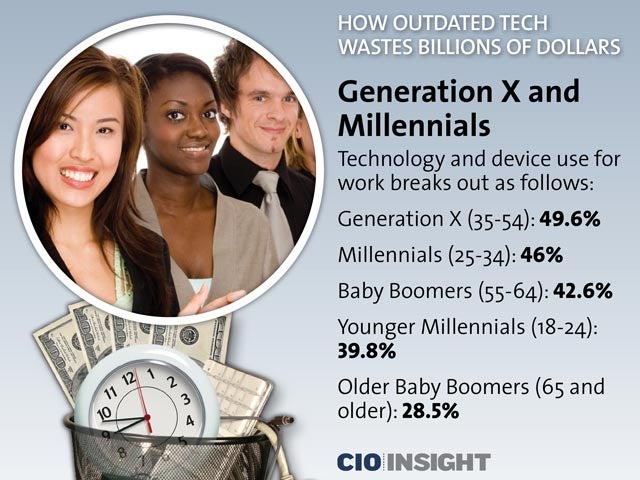 Generation X and Millennials
Generation X and Millennials
Technology and device use for work breaks out as follows: Generation X (35-54): 49.6%, Millennials (25-34): 46%, Baby Boomers (55-64): 42.6%, Younger Millennials (18-24): 39.8%, Older Baby Boomers (65 and older): 28.5%
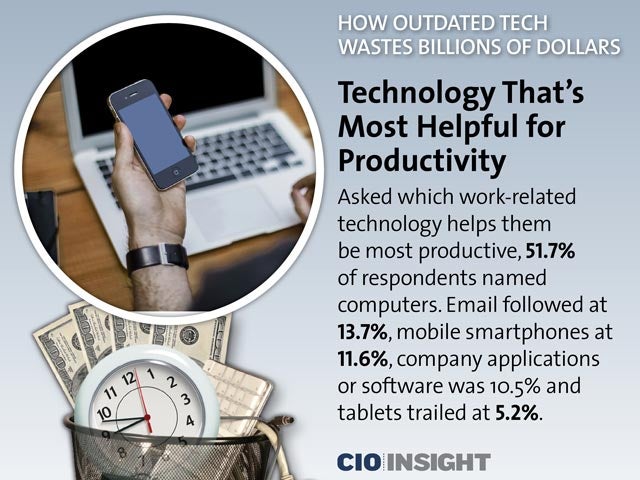 Technology That’s Most Helpful for Productivity
Technology That’s Most Helpful for Productivity
Asked which work-related technology helps them be most productive, 51.7% of respondents named computers. Email followed at 13.7%, mobile smartphones at 11.6%, company applications or software was 10.5% and tablets trailed at 5.2%.
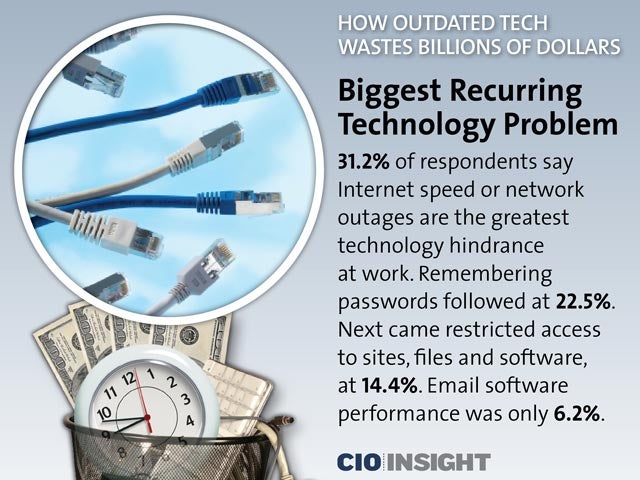 Biggest Recurring Technology Problem
Biggest Recurring Technology Problem
31.2% of respondents say Internet speed or network outages are the greatest technology hindrance at work. Remembering passwords followed at 22.5%. Next came restricted access to sites, files and software, at 14.4%. Email software performance was only 6.2%.
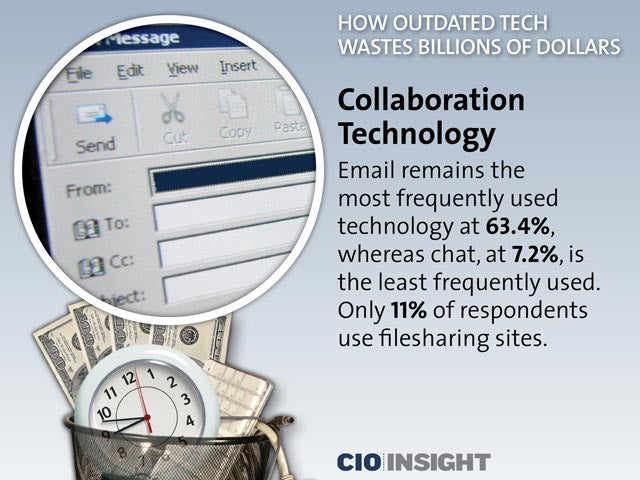 Collaboration Technology
Collaboration Technology
Email remains the most frequently used technology at 63.4%, whereas chat, at 7.2%, is the least frequently used. Only 11% of respondents use filesharing sites.
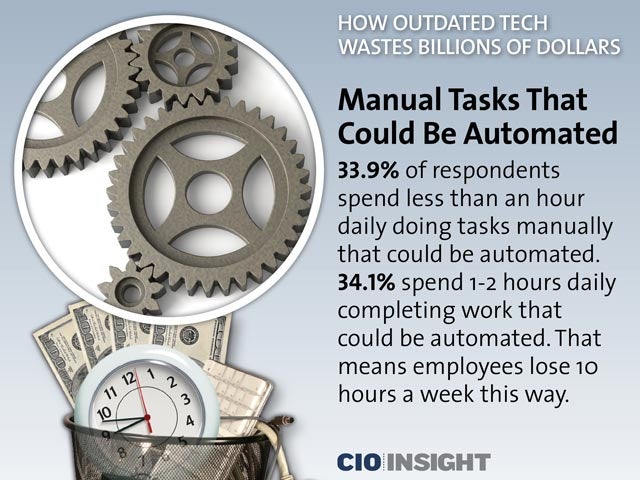 Manual Tasks That Could Be Automated
Manual Tasks That Could Be Automated
33.9% of respondents spend less than an hour daily doing tasks manually that could be automated. 34.1% spend 1-2 hours daily completing work that could be automated. That means employees lose 10 hours a week this way.
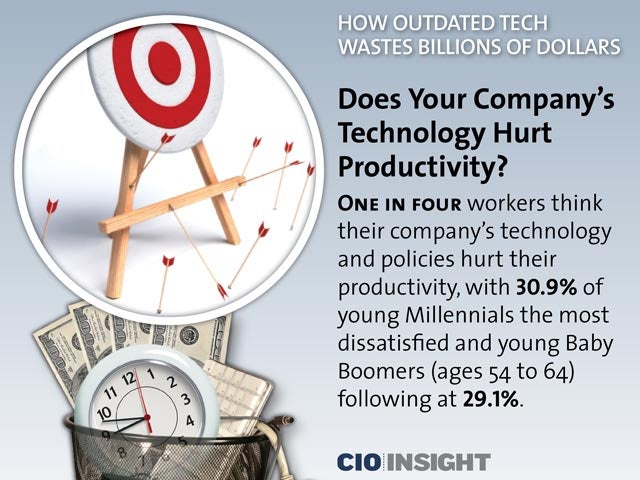 Does Your Company’s Technology Hurt Productivity?
Does Your Company’s Technology Hurt Productivity?
One in four workers think their company’s technology and policies hurt their productivity, with 30.9% of young Millennials the most dissatisfied and young Baby Boomers (ages 54 to 64) following at 29.1%.
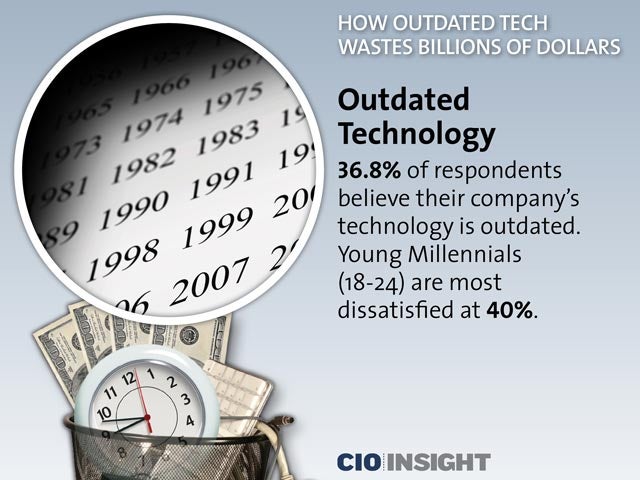 Outdated Technology
Outdated Technology
36.8% of respondents believe their company’s technology is outdated. Young Millennials (18-24) are most dissatisfied at 40%.
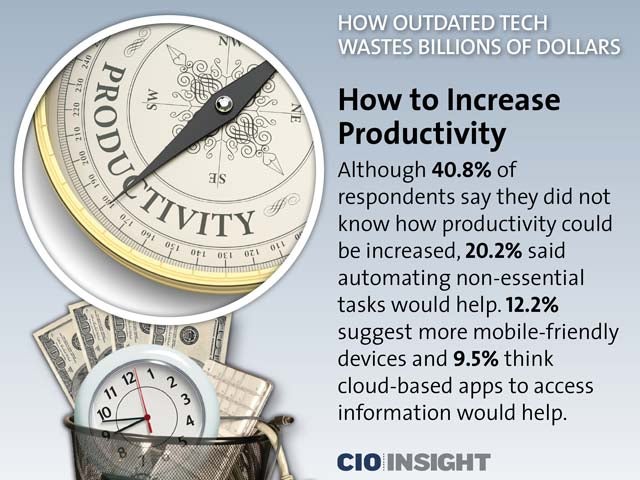 How to Increase Productivity
How to Increase Productivity
Although 40.8% of respondents say they did not know how productivity could be increased, 20.2% said automating non-essential tasks would help. 12.2% suggest more mobile-friendly devices and 9.5% think cloud-based apps to access information would help.